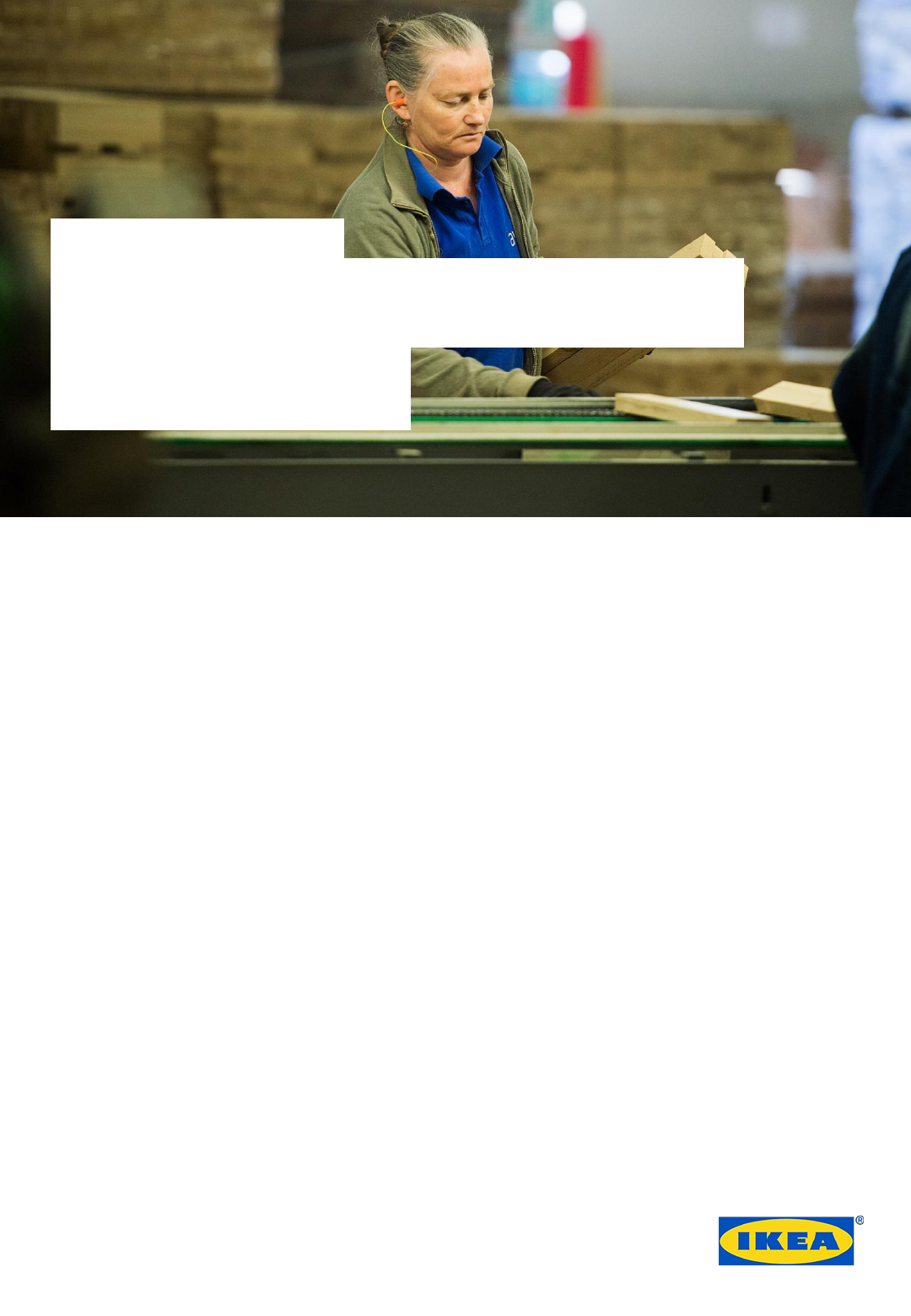
IKEA FACTS
ENGINEERED
WOOD
To reduce the impact our business has on the environment, IKEA constantly
strives to make more from less. That’s why we’ve been using smart design
and lightweight materials for several decades. One of the most recent
inventions is engineered wood. Developed together with our Romanian
supplier Aviva, it enables us to reduce wood consumption by more than 60%.
• The size of the IKEA business means that we use a lot of resources to make products for our
customers. We are committed to sustainable sourcing and to use materials as efficiently as
possible, thereby minimising our impact on the environment.
• Through the use of innovative design and lightweight materials, we can use less material in
our products.
• Today, IKEA has a wide range of products developed with our lightweight agenda in mind.
One example is the honeycomb construction made of fiber-based materials. It has been
used for many years as a core material in board based products such as the LACK table.
• Another lightweight technology is the BOBOARD. It adapts the density of the board to the
need of the product, thereby saving almost 100 000 tons of wood each year. The BOBOARD
production technique is used in BILLY bookcases and PAX wardrobes, for instance.
• One of the newest inventions linked to the IKEA lightweight agenda is engineered wood. The
production technique has been developed by our supplier Aviva in collaboration with IKEA.
• Engineered wood consists of a core layer made of particleboard and a top layer made of
solid wood. Today, engineered wood is used in our lightweight kitchen and dining worktops
MÖCKELBY, MÖRBYLÅNGA, STENSTORP, MÖLLEKULLA and KARLBY.
• Using engineered wood to produce lightweight worktops decreases wood consumption by
more than 60% compared to solid worktops, reducing the impact on the environment.
© Inter IKEA Systems B.V. 2015

• An additional advantage is that 100% of the tree can be used when producing
engineered wood, compared to around 50% in solid wood production. Engineered wood
follows nature – by using both the trunk and the branches in a balanced and sustainable
way – thereby reducing production waste.
• While engineered wood has the same look and feel as solid wood, it weighs 20% less.
This makes transportation approximately 5% more efficient, which reduces CO2
emissions. Lightweight furniture is also easier for the customer to carry and handle.
• Furthermore, using engineered wood significantly improves product quality, since it is
more stable and handles humidity better. Solid wood grows and shrinks depending on
humidity, which results in a risk of bending and cracking.
• Our goal is to extend the capabilities of the existing engineered wood production
technique, such as forming chamfered and wavy edges, as well as oval and round
shapes. This will enable us to expand the use of engineered wood to a wider range of
products, like living room and bathroom furniture.
• Aviva is located in Sighetu Marmatiei in Romania. They have been an IKEA supplier since
2005. Today, they produce KARLBY and MÖLLEKULLA worktops, MÖCKELBY and
MÖRBYLÅNGA dining tables, and STENSTORP kitchen accessories for IKEA.
• Currently, Aviva makes around 1.1 million IKEA products on a yearly basis.
• Aviva employs about 1500 people. Around 40% are women.
© Inter IKEA Systems B.V. 2015
